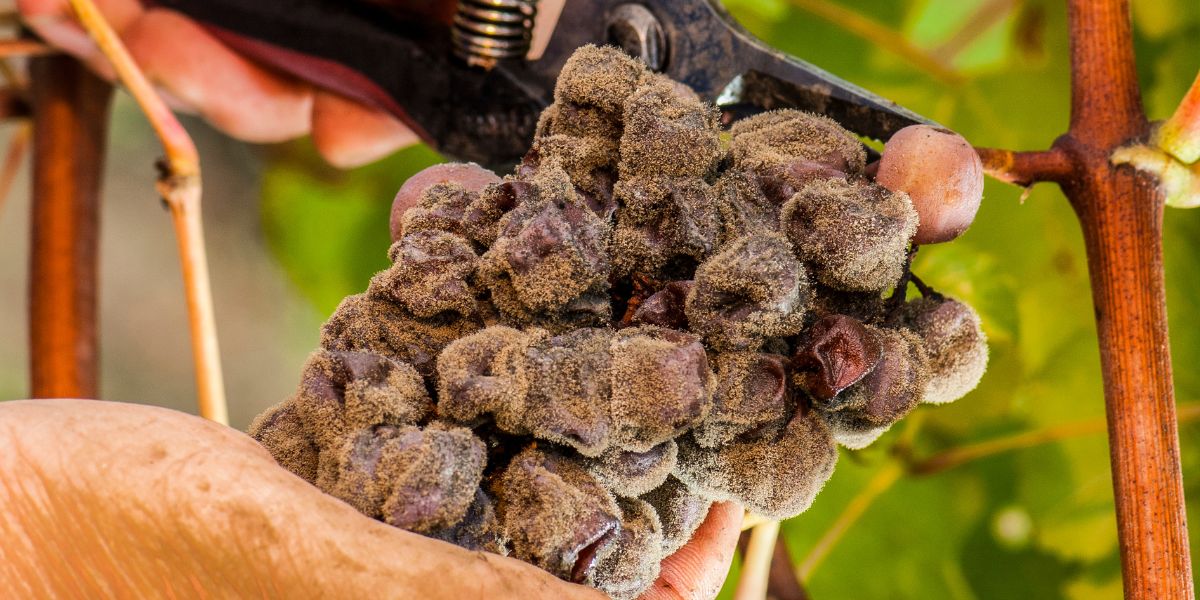What is Sauternes?
Sauternes is an AOC (Appellation d’Origine Contrôlée), established in 1936, and located in Bordeaux, France. The region produces an unfortified sweet wine, that can be made with Semillon, Sauvignon Blanc, Muscadelle and Sauvignon Gris grapes.
The AOC entails five different communes in the Gironde Department: Sauternes, Barsac, Bommes, Preignac and Fargues.
Where is Sauternes Located?
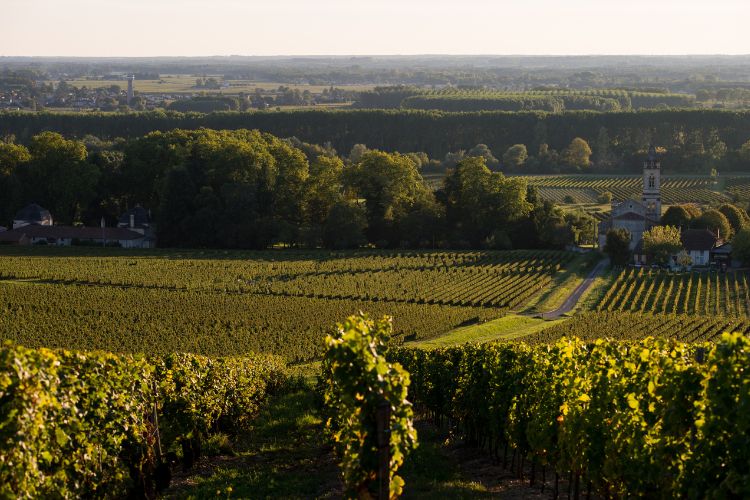
Sauternes is located in the captivatingly beautiful region of Bordeaux, which is nestled in the southwest of France. Renowned worldwide for its remarkable wines, Bordeaux is a captivating tableau of vine-laden landscapes, historic châteaux, and charming villages.
Sauternes itself lies in the southern part of Bordeaux, just about 40 kilometers southeast of the city of Bordeaux. The region encompasses five communes: Sauternes, Barsac, Bommes, Preignac, and Fargues, each contributing their unique terroir to the characterful Sauternes wines. If you imagine the Bordeaux region as a giant clock, the Sauternes region would be around 6 o’clock, right at the bottom.
This area is crisscrossed with winding country roads and picturesque vineyards that extend as far as the eye can see. The River Garonne and its tributary, the Ciron, play an essential role in creating the unique microclimate responsible for the “noble rot” – a crucial factor in Sauternes wine production.
Visitors to Sauternes can explore the quaint, rustic charm of the communes, sample the exceptional wines, and take in the beauty of the vine-clad landscapes. It’s a place that encapsulates the quintessence of French winemaking tradition and pastoral elegance.
The History of Sauternes
The history of Sauternes, much like its golden-hued wines, is rich, deep, and steeped in fascinating anecdotes and historical twists and turns.
Dating back to the 17th century, the Sauternes region’s winemaking legacy started quite differently from the sweet, luscious wines it is famous for today. Initially, the vineyards were planted with red grape varieties, primarily intended for producing claret, a term the English used to describe Bordeaux’s red wines.
However, the winemaking destiny of the region transformed dramatically when Dutch merchants began trading in the area. They noticed that the foggy conditions around the Ciron river tributary created a specific microclimate that encouraged the development of a benign fungus known as Botrytis cinerea, or “noble rot.” This fungus had a profound impact on the grapes, dehydrating them and concentrating the sugars, lending a unique, honeyed sweetness to the wines.
By the late 18th century, the fame of Sauternes wines, now entirely white, had spread throughout Europe. They graced the tables of nobles and royalty, became an object of desire among wine enthusiasts, and even found favor with Thomas Jefferson, the third President of the United States, an avid wine collector and enthusiast.

The 1855 Bordeaux classification further cemented Sauternes’ reputation when Château d’Yquem was awarded the unique status of Premier Cru Supérieur, a higher rank than any other in the classification, showcasing the wine’s exceptional quality.
Over the centuries, despite various challenges such as vine diseases and market fluctuations, Sauternes has held onto its rich winemaking tradition. The region continues to produce some of the world’s most renowned and sought-after sweet wines, capturing the essence of its unique terroir and the magic of its noble rot in each decadently sweet sip.
Understanding the Sauternes AOC
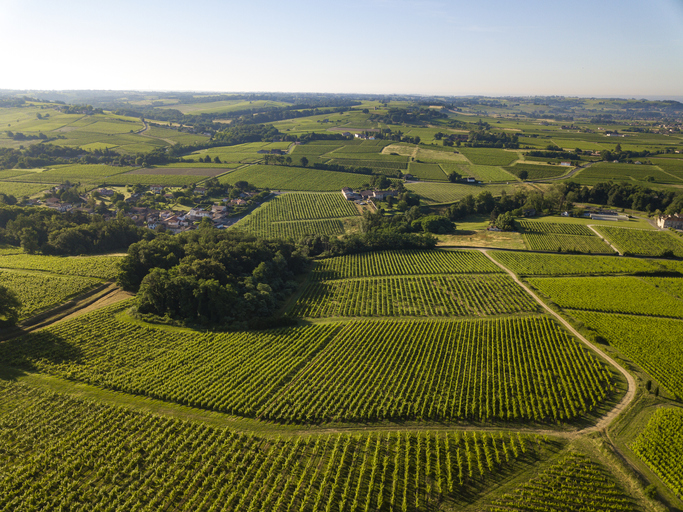
AOC, short for Appellation d’Origine Contrôlée, is the French certification granted to certain designated regions in the country for the production of wine, cheese, butter, and other agricultural products. Introduced in the 1930s, the AOC system is built on the French concept of “terroir,” which emphasizes the unique characteristics imparted to a product by its geographical environment, including factors like soil, climate, and traditional production methods.
When it comes to Sauternes, the AOC designation plays a crucial role in maintaining the distinct identity and quality of the wines produced in this region. Established in 1936, the Sauternes AOC encompasses five communes: Sauternes, Barsac, Bommes, Preignac, and Fargues. The AOC regulations strictly define the grape varieties used (primarily Sémillon, Sauvignon Blanc, and Muscadelle), the wine-making practices, and the geographical boundaries within which Sauternes wine can be produced.
Moreover, Barsac, one of the five communes, is unique in that it has its own AOC within the Sauternes AOC. Wines produced in Barsac can be labeled as either Barsac or Sauternes, offering some flexibility and recognition of the specific character of wines from this area.
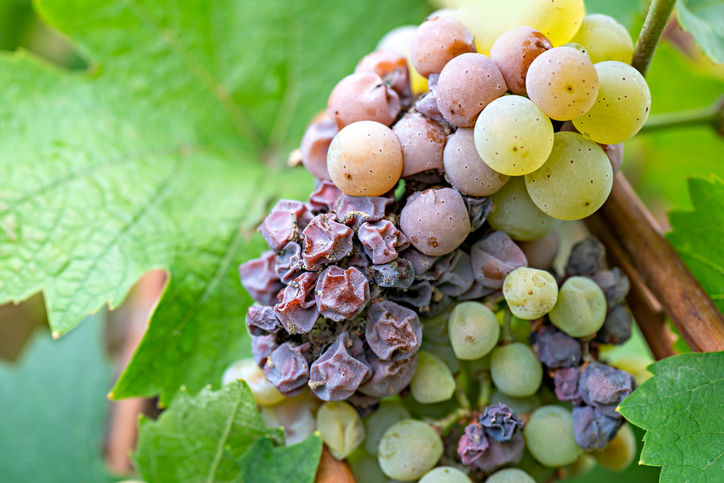
The influence of Sauternes, thanks to its renowned sweet wines, has led to the development of other “Sweet Bordeaux” AOCs. These include regions like Loupiac, Cadillac, and Sainte-Croix-du-Mont, which also produce sweet white wines inspired by the Sauternes style. Each of these regions, while adhering to the basic principles of sweet wine production, boasts its own unique terroir and subtly different expressions of sweet wine.
In essence, the AOC system in Sauternes, and indeed throughout France, is a guarantee of quality and authenticity. It safeguards the heritage and uniqueness of Sauternes wine, ensuring that each bottle labeled as such truly represents the time-honored traditions and exceptional terroir of this iconic wine region.
The Making of Sauternes
Sauternes wines are prized worldwide for their unique sweet character, and the making of these distinctive wines is a fascinating combination of nature’s influence and human ingenuity. At the heart of the process are two critical factors: a unique fungus called “noble rot” and a careful selection of grape varieties.
The Role of Noble Rot
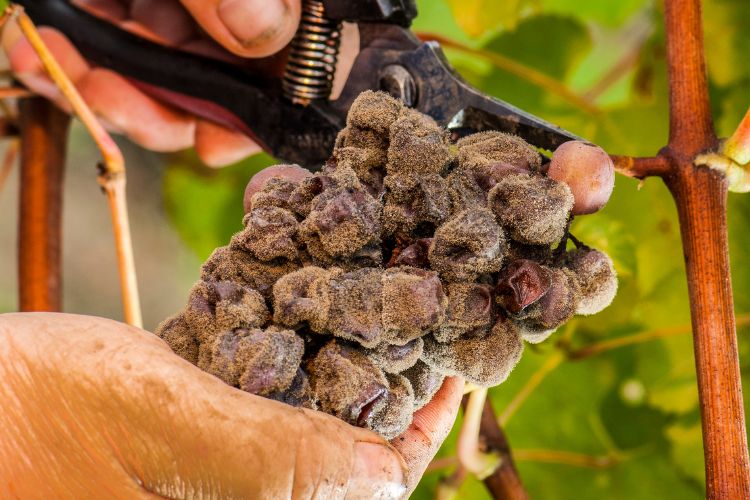
Also known as Botrytis cinerea, noble rot is a fungus that plays a pivotal role in giving Sauternes its remarkable sweetness and complexity. This beneficial mold thrives in the specific microclimate of the Sauternes region, where the misty conditions caused by the cool Ciron river meeting the warmer Garonne river create an ideal environment for its development.
Noble rot affects the grapes in a unique way. It pierces the grape skins, leading to dehydration of the berries, which in turn concentrates the sugars and flavors. This process results in grapes that, while visually unappealing, are the source of Sauternes’ intense sweetness and complex flavor profile, characterized by honey, apricot, and a unique botrytis-infused character that wine connoisseurs describe as utterly captivating.
Grape Varieties in Sauternes Production
The Sauternes AOC mandates the use of three primary grape varieties in its wine production: Sémillon, Sauvignon Blanc, and Muscadelle.
Sémillon is the dominant variety, often making up 80% or more of the blend. This grape is particularly susceptible to noble rot, and its rich, oily texture contributes significantly to the luscious mouthfeel and body of Sauternes wines.
Sauvignon Blanc adds a refreshing acidity that beautifully balances the sweetness of the wine, preventing it from becoming cloyingly sweet. It also contributes aromatic nuances of citrus and grass, adding a layer of complexity to the wine.
Muscadelle, while used less frequently and typically in smaller proportions, offers floral and grapey notes that can enhance the aromatic complexity of the wine.
The harmony between these grape varieties and the transformative touch of noble rot results in the production of Sauternes, a wine that embodies a delightful balance of sweetness, acidity, and a broad spectrum of flavors, making it one of the most revered dessert wines in the world.
Styles and Classification of Sauternes
The Sauternes region, despite its relatively small size, offers a delightful range of styles in its wines. These styles are largely influenced by the varying degrees of botrytis influence, the precise blend of grape varieties, vintage, and the winemaking techniques employed.
Styles of Sauternes
Lighter Styles
In lighter styles of Sauternes, the noble rot’s influence is less profound, resulting in wines that are fresh, with a bright acidity and vibrant fruit flavors such as green apple, pear, and citrus zest. These wines are typically less sweet and have a more pronounced minerality. The Sauvignon Blanc component often plays a more prominent role in these wines, lending them a crisp, refreshing character.
Richer Styles
The richer styles of Sauternes are more decadently sweet, with a pronounced botrytis character and a lush, almost viscous texture. The flavors lean towards dried fruits, honey, caramel, and a unique spicy note attributed to the botrytis. These wines are usually more Sémillon-dominant and have been aged for longer periods, which deepens the flavors and allows the wine’s complexities to evolve.
Sauternes/Barsac Classification System
The Sauternes/Barsac classification system is part of the historic Bordeaux Wine Official Classification of 1855, which classified the wines from best to good based on the reputation and trading price.
In the context of Sauternes, the classification system divides the châteaux (wineries) into three categories:
- Premier Cru Supérieur: This highest category has only one entrant, Château d’Yquem, considered by many to be the world’s greatest sweet wine.
- Premiers Crus (First Growths): This category consists of eleven châteaux that are recognized for consistently producing wines of high quality. Examples include Château La Tour Blanche and Château Climens.
- Deuxièmes Crus (Second Growths): This category includes fourteen châteaux, still recognized for excellent quality, though considered a step below the Premier Crus.
While these classifications have remained unchanged since 1855, it’s important to remember that quality can vary from year to year based on conditions in the vineyard and the winemaking process. Many Deuxièmes Crus, for example, regularly produce wines that rival those of the Premiers Crus. Thus, while the classification system offers a historical snapshot of Sauternes’ reputation, it is not the sole determinant of a wine’s quality or potential for enjoyment.
Prominent Sauternes Producers
The Sauternes region is home to numerous esteemed wine producers, each contributing its unique touch to the grand landscape of Sauternes wines. While it’s impossible to cover all the noteworthy châteaux, let’s delve into a few that have earned particular acclaim.
Château d’Yquem
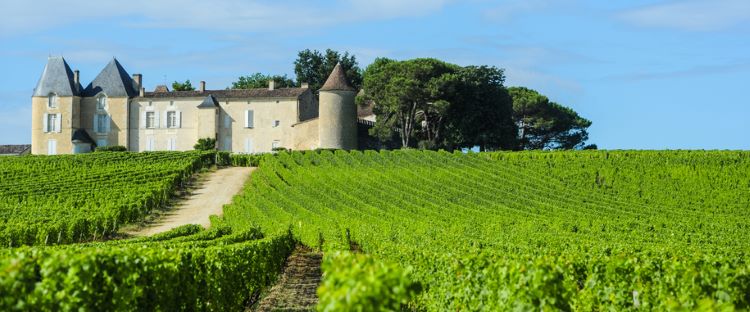
No discussion of Sauternes would be complete without the mention of Château d’Yquem. As the only producer awarded the prestigious Premier Cru Supérieur status in the 1855 classification, d’Yquem stands in a league of its own. With a history dating back to 1593, it’s renowned for producing the world’s most famous and arguably the most exceptional sweet wine. The wines are marked by their balance, concentration, complexity, and remarkable longevity.
Château Climens
Located in the Barsac commune, Château Climens is regarded as the “Lord of Barsac.” Awarded Premier Cru status, Climens is famous for its elegant and subtly perfumed wines, distinguished by their finesse rather than sheer power. The château produces its sweet wines solely from the Sémillon grape variety, leading to a distinct, pure expression of the fruit and terroir.
Château Suduiraut
Another Premier Cru estate, Château Suduiraut, is known for its consistently excellent wines. Situated in Preignac, the château’s vineyards are planted mainly with Sémillon and a smaller proportion of Sauvignon Blanc. Suduiraut’s wines are renowned for their bold, rich style and a diverse array of flavors, from ripe tropical fruits to sweet spices.
Château Rieussec
Owned by the famous Rothschild family, Château Rieussec is a Premier Cru estate based in Fargues. The wines from Rieussec are recognized for their luscious texture, depth, and a diverse flavor spectrum that evolves wonderfully as the wine matures.
Château Coutet
Château Coutet, another Barsac-based Premier Cru estate, boasts one of the longest histories in the Sauternes region. Its wines are admired for their precision, fresh acidity, and complex flavors that seamlessly blend sweetness with a vibrant energy.
These are just a handful of the remarkable producers in the Sauternes region, each showcasing their own expression of the magical combination of Sémillon, Sauvignon Blanc, noble rot, and the unique terroir of Sauternes. Exploring the offerings from these producers is a delightful journey into the enchanting world of Sauternes wines.
Sauternes Tasting Guide
One of the great joys of wine appreciation is the sensory exploration involved in tasting. Sauternes offers an especially compelling journey, bursting with fascinating aromas, flavors, and textures that evolve and deepen over time. Let’s take a closer look at what to expect when savoring this iconic sweet wine.
Flavor Profiles and Aromas of Sauternes
Sauternes is renowned for its complex and expressive bouquet, an intriguing blend of fruit, spice, and earthy notes that can keep you nosing your glass for a good while. Aromas often suggest ripe and dried fruits such as apricot, peach, and pineapple, mingled with hints of honey, caramel, butterscotch, and almond.
As the wine matures, these notes evolve and deepen, leading to more complex aromas such as saffron, ginger, nutmeg, and even a touch of mushroom. And then, of course, there’s the signature scent of botrytis, often likened to the smell of a wet forest floor, which adds an earthy depth and complexity to the aromatic profile.
In terms of flavor, Sauternes is a beautiful balance of sweetness and acidity. The palate usually mirrors the nose, offering rich, concentrated flavors of ripe and candied fruits, honey, and sweet spices. The high acidity prevents the sweetness from being cloying, leading to a finish that is often surprisingly refreshing.
Tips for Tasting Sauternes
When tasting Sauternes, it’s best to serve it slightly chilled, between 10-12°C (50-54°F). This temperature helps to accentuate the wine’s aromas and maintain a pleasing balance between sweetness and acidity.
Start by observing the color – Sauternes is known for its distinctive golden hue, which deepens to amber as it ages. Then take a moment to swirl the wine gently in your glass to release its aromas. Inhale deeply, and try to identify the various fruit, spice, and earthy notes.
When you taste, take a small sip first to acclimate your palate to the wine’s sweetness. On your second sip, let the wine linger in your mouth, allowing it to reach all your taste buds. Try to identify the flavors, note the balance between sweetness and acidity, and observe the wine’s body and texture. Finally, pay attention to the finish – how long do the flavors linger after you swallow?
Pairing Sauternes with Food
Sauternes is a remarkably versatile wine when it comes to food pairings. Its sweetness and acidity allow it to complement a wide range of dishes, from savory to sweet.
A classic pairing is foie gras – the rich, buttery texture and flavor of the foie gras contrast beautifully with the sweet, vibrant character of the Sauternes. Other savory options include blue cheese, especially Roquefort, and dishes with a hint of sweetness, like glazed pork or duck.
On the sweeter side, fruit-based desserts are a wonderful match, particularly those involving apricots, peaches, or pears. And for a simple but heavenly pairing, try Sauternes with a slice of a traditional French dessert like Tarte Tatin or a creamy Crème Brûlée.
RELATED: How to Pair Other Bordeaux Wines with Food
Sauternes and Sushi?
Sauternes and sushi might not be the most traditional pairing, but it’s one that holds delightful potential. The interplay between the sweet, honeyed notes of a Sauternes and the freshness of sushi can be surprisingly harmonious. The wine’s sweetness can balance the savory soy sauce and complement the delicate sweetness of fresh seafood, particularly shellfish like shrimp or scallop sushi. The acidity of Sauternes cuts through the richness of sushi with avocado or fatty fish like salmon. Moreover, Sauternes’ complex aromatics can stand up to and even enhance the subtle flavors of a beautifully prepared sushi plate. This unexpected pairing challenges conventional wisdom and underscores the versatility of Sauternes, proving once again that this iconic sweet wine can venture far beyond the dessert course.
While Sauternes has traditionally been associated with desserts or rich, creamy cheeses, its innate complexity and balance make it a surprisingly versatile companion for a variety of dishes. The pairing of Sauternes with sushi showcases this adaptability beautifully.
To start, the inherent freshness and purity of sushi present a striking contrast to the lush sweetness of Sauternes, creating an appealing balance on the palate. The crisp acidity of the wine, a key feature that prevents it from feeling overly sweet, helps to cleanse the palate and refresh the taste buds after each bite of sushi, readying you for the next.
But the synergy goes beyond simple contrasts. The concentrated, honeyed notes of a Sauternes can mirror the gentle sweetness found in seafood, particularly in shellfish like shrimp or scallop nigiri. This shared sweetness forms a bond between the wine and the food, enhancing the inherent flavors of both.
The pairing becomes even more interesting when you introduce elements like soy sauce or wasabi into the equation. The saltiness of the soy sauce forms a compelling counterpoint to the sweetness of the wine, while the spicy heat of the wasabi can be tempered by the wine’s rich, fruity notes.
Moreover, don’t overlook the role of texture. The silky, viscous texture of Sauternes is a pleasure in itself, and it can provide a nice contrast to the varied textures found in a sushi selection, from the smooth, tender fish to the slightly chewy, vinegared rice.
Perhaps the most thrilling part of this unconventional pairing is how the complex aromatics of Sauternes interact with the flavors of the sushi. Elements like ginger, wasabi, or even the nori can elicit new facets of the wine, encouraging it to reveal secondary or tertiary flavors and aromas that might have been more subdued otherwise.
Remember, wine pairing is a very personal experience and the “right” pairing is one that you enjoy. Feel free to experiment and discover your own perfect Sauternes pairings.
Serving and Storing Sauternes
Understanding the best practices for serving and storing Sauternes can greatly enhance your enjoyment of this exquisite wine. Here, we’ll delve into the ideal serving temperature, the best choice of glassware, and how to store your Sauternes to ensure it remains in peak condition.
Serving Temperature
Like most sweet wines, Sauternes is best served chilled, but not too cold. The optimal temperature is typically between 10-12 degrees Celsius (50-54 degrees Fahrenheit). This temperature highlights the wine’s delicate complexity and rich bouquet without muting its aromatic intensity. If the wine is served too cold, it could suppress the aromas and flavors, while serving it too warm could over-emphasize the sweetness and alcohol.
Glassware
Choosing the right glassware can enhance your Sauternes tasting experience. A wine glass with a smaller bowl is ideal. This shape concentrates the aromatic compounds at the rim of the glass, allowing you to fully appreciate the nuanced aromas of the wine. It’s also customary to fill the glass only to the broadest part of the bowl, leaving plenty of space for the aromas to circulate.
Storage
Storing Sauternes properly is crucial for preserving its quality. As with most wines, Sauternes should be stored in a cool, dark place where the temperature is consistently around 10-15 degrees Celsius (50-59 degrees Fahrenheit). The wine bottles should be stored on their sides to keep the cork moist, thus preventing it from drying out and allowing air to enter the bottle.
In terms of longevity, Sauternes is a wine that can age beautifully. Depending on the vintage and the producer, some Sauternes wines can be stored for decades, evolving and developing new flavors and aromas over time. However, once opened, a bottle of Sauternes, like other sweet wines, can last for a few weeks if recorked and refrigerated.
Visiting the Sauternes Region
A trip to the Sauternes region, with its picturesque vineyards, historical châteaux, and the chance to taste some of the world’s most exceptional sweet wines, can be a captivating experience. Here’s a glimpse into what awaits you on your visit.
Best Sauternes Wineries for Tours and Tastings
Château d’Yquem
As the only wine classified as Premier Cru Supérieur in the 1855 Bordeaux classification, a visit to Château d’Yquem is a must. This prestigious estate offers guided tours, which include a walk through their vineyards, a visit to their cellars, and a tasting of their iconic Sauternes.
Château Guiraud
A classified First Growth, Château Guiraud is another great stop. It’s recognized for its commitment to organic viticulture. Their guided tours give an in-depth understanding of their winemaking process, followed by a tasting.
Château Suduiraut
This beautiful estate is known for its classic French garden designed by André Le Nôtre, the landscape architect of Versailles. A visit here offers a perfect blend of wine, history, and nature.
Local Attractions & Restaurants
Beyond wineries, the Sauternes region, part of the broader Bordeaux area, is filled with cultural and gastronomic attractions. Bordeaux city, less than an hour away, is rich in history with its stunning architecture, museums, and vibrant dining scene. It’s worth spending a day exploring this UNESCO World Heritage city.
RELATED: The Best 30 Bordeaux Wineries to Visit This Year
For dining, ‘La Chapelle de Guiraud’ located at Château Guiraud‘, offers a culinary experience that pairs local cuisine with their wines. Meanwhile, ‘Auberge les Vignes‘ in the heart of Sauternes village offers comfortable accommodation and delicious regional food.
However, the culture here extends beyond wine. The region is known for its ‘Art de Vivre’ – the art of living. This philosophy is reflected in the local gastronomy, music, arts, and leisurely pace of life. The people are warm and welcoming, always ready to share their love for their land and wines.
In essence, a visit to the Sauternes region offers not just a journey into the world of luscious sweet wines, but an immersion into a rich cultural landscape where tradition, gastronomy, and the love for wine intertwine. Whether you’re a wine enthusiast, a foodie, or a history buff, the Sauternes region has a unique and engaging experience waiting for you.
Frequently Asked Questions about Sauternes Wine
You are reading “Sauternes Wine: Everything You Need to Know” Back To Top
what is sauternes wine, sauternes wine taste, sauternes wine region, sauternes food pairing: educational wine articles
If you enjoyed this guide, consider joining the Facebook Group to interact with other Winetravelers and for wine travel inspiration around the world. Be sure to follow us on both Twitter and Instagram to stay up to date with our trending content.
